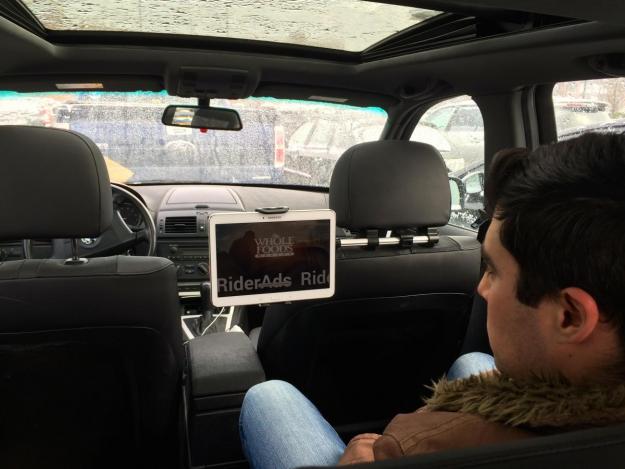By Carolyn Said
San Francisco Chronicle
WWR Article Summary (tl;dr) Some Uber and Lyft drivers are also becoming mobile marketers. Through electronic tablets and billboards, businesses are tapping the drivers to reach a widespread audience of captive passengers and passersbys.
San Francisco Chronicle
Giant decals that encase cars with corporate logos and brand messages. Electronic billboards on auto roofs that flash advertisements. Digital tablets in the backseat that show videos and commercials. A hotel minibar-like selection of snacks and sundries for sale in the car with freebies of new products.
All are ways that clever entrepreneurs are trying to turn Uber and Lyft drivers into mobile marketers. The idea: Help drivers make more money while they’re already at work, and reach a widespread audience of captive passengers and passersby.
Most are backed by small startups that have yet to gain much traction, but they see giant untapped potential.
Marketing experts say the messages seem an effective way to grab eyeballs in a distracted world, while city
planners and residents decry the visual pollution of huge roving advertisements.
People may need to brace for even more ads on wheels: The concepts are precursors of the robot-taxi future, when omnipresent ads and tacked-on services may subsidize most rides.
“If you get in early on one of these things, you might get a whole bunch of social energy — people talking about it,” said David Aaker, a professor emeritus of marketing at UC Berkeley’s Haas School of Business and author of “Creating Signature Stories.” “However, that will get old fast.
“The problem is that it may be distracting, obnoxious, and sound inauthentic and like a gimmick,” Aaker said.
“That’s OK for brands that are playful and outrageous anyway.”
For drivers, generating supplemental revenue while working seems like a win-win.
“We see a big opportunity for services that help drivers make more money without negatively impacting the passenger experience,” said Andy Pillsbury, vice president of SherpaShare, which makes an app for drivers to track their mileage and expenses. “If they can offer a service that enhances rides that’s even better.”
“You’ve just gotta hustle,” said Uber driver Aaron Powell of Berkeley. “Whatever you can do to make a little extra money on the side, you gotta do it.”
He was approached about putting a video display on his car, but his Volkswagen Jetta lacks the necessary roof rack. He makes extra money through a YouTube channel, YourPersonalDriver, and earns Amazon affiliate fees for referring customers to buy ride-hail accessories.
Uber and Lyft are not enthusiastic about drivers displaying ads, but they cannot stop them as long as they want to keep drivers classified as independent contractors rather than employees.
“Uber and Lyft both sort of prohibit advertising on vehicles, but it’s not really enforceable because all these drivers own their own cars and are 1099 contractors so the companies can’t tell them what to do with their cars,” said James Heller, CEO of Wrapify, which wraps cars in advertising decals.
Lyft, which did not return requests for comment, itself uses car-wrapping services to encase vehicles in its distinctive hot-pink hue for marketing campaigns.
“Third-party advertisements are often unexpected in Lyft vehicles, making passengers feel uncomfortable or pressured,” Lyft says in online information for drivers. “While the choice is up to you, keep in mind that this may negatively affect your driver rating and likelihood of earning tips.”
Uber’s vehicle requirements state, “No commercial branding,” but the company said it does not explicitly prohibit advertising. It has used car wrapping for its own marketing, such as rainbow wraps for San Francisco Pride.
Many airports don’t allow ride-hailed vehicles to display ads. San Francisco International Airport rules say Uber and Lyft drivers cannot display any ads on their cars besides the company logos. Wrapped vehicles would not be permitted, said SFO spokesman Doug Yakel, but electronic rooftop displays would be all right as long as they were switched off. SFO fines drivers about $100 for violating the advertising ban, he said.














































































































































































































































































































































































